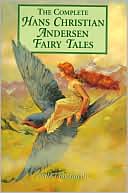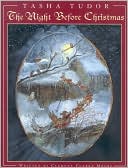Read these classic Christmas tales to help students improve creative-writing skills by writing stories. Teachers can also review Romanticism in your literature classes.
Page 1 of 2
Read these classic tales with your students. They are inventive, ironic, moralistic, and useful for the study of literary time periods.
Story Activities
Christmas Stories
Internet Resources
Related Books
Story Activities
Literary Time Periods
The stories highlighted here were written during the Romantic Period. Discuss the definition of Romanticism with your students and then review the romantic aspects of each work.
Overview of the Romantic Period
Romanticism was a literary and artistic movement that spanned from the late 18th century to the late 19th century. The Romantic period was a reaction to the Neoclassical (Classical) which followed the 18th century archaeological rediscovery of Herculaneum and Pompeii. Neoclassicism is closely linked with the American and French revolutions, when young democracies were forming and being compared to the democracy of ancient Greece. In reverence to antiquity, Neoclassical writers, such as Alexander Pope, valued ideal beauty, orderly form, and reason. In contrast, the writers of the Romantic period valued imagination, emotion, nature, and individuality. Wordsworth called for the "the spontaneous overflow of powerful feelings." Romantic poets valued the imagination of the individual artist and his relationship with nature, as we see in the writings of Thoreau, Emerson, Coleridge, Wordsworth, and Blake. These writers valued emotions over reason, and used symbolism which often referred to a spiritual reality. Storytelling Interest Grabber
Find a collection of stories, like Grimm's Fairytales, tales by Hans Christian Andersen, or 1001 Arabian Nights. Read each story until you get to the climax. Finish reading the story the next day, and start a new story. Again, stop when the story reaches its climax, and finish the next day. This really keeps students interest high! And it may teach them patience. Picture Stories
Bring in a number of fine art reproductions (old calendars, or copies of paintings from http://www.corbisimages.com/fineart/fafocus/women/special1.asp, for example). Split students into groups of two or three. Give each group a copy of a painting. Using the picture as a jumping off point, have students begin writing a story. Time them (five minutes), or have them write a certain number of sentences (three). Then have the groups exchange papers. Now each group adds to the story they were given (write for five minutes or add three sentences). Ask the originating group keep their painting. After each group has added to the stories, ask the originating groups to read the stories out loud. Display all of the paintings for the whole class to see, and have the class guess which painting was the inspiration for each story.
Story Organization
Pass out the handout Five Elements of the Story. Review the five classic parts of a story: - Introduction/Exposition: Setting (time and place) and main characters are introduced.
- Rising action: Main problems are introduced.
- Climax: The main problem occurs.
- Falling action: Repercussions for problems occur.
- Resolution/Denouement: Problems are resolved.
Split your class into small groups. Give each group a folk tale. After they read their story to each other, ask the groups to identify the different elements of the story. What was introduced in the exposition? When did the climax occur?
Radio Performance
Offer students a variety of stories to work with. Have students choose groups and then choose one of the stories. Tell them that they will be performing their story as if they were on the radio. As they read the story in their groups, the students need to think about who will play which part, what sounds effects would be appropriate to add to the story, and how they should use their voices to indicate different characters. Give students objects they can use to make sound effects. After practicing, perform each story! Perhaps you could tape each group's performance, and play it back so they can hear their performance. Word Jazz
Have students vertically write the letters A through F on a sheet of paper. Then have them choose a number between 1 and 10 for each letter, writing that on the sheet of paper as well. Give each student the Word Jazz handout. Have students circle the word that corresponds with the list and number they chose. Now have students write a story using each of the words. They may need dictionaries!









